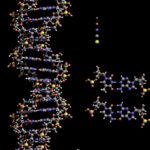The phrase “Bing chilling!” echoes in my mind, a mocking taunt hurled by a student as I walked by. I resisted the urge to confront them, opting instead for a simple eye roll and continuing on my way. This kind of encounter, unfortunately, was becoming increasingly common.
It all traces back to a seemingly innocuous video posted by professional wrestler John Cena in 2021. To promote his film “F9,” Cena shared a video online of himself enthusiastically enjoying ice cream (bīng qí lín in Mandarin) while speaking Mandarin. The internet reacted with an explosion of laughter. But what exactly was so humorous about John Cena speaking Chinese and enjoying a frozen treat? The novelty, it seemed, was simply that he was speaking Mandarin at all.
Initially, the humor might have seemed lighthearted. However, the “Bing chilling” clip, much like other Chinese-themed memes such as “Jiafei,” “Xiaoling,” and “Super Idol,” quickly became overused and, for me, lost its comedic appeal.
My own history with such mockery stretches back to elementary school. Classmates would chant rhyming nonsense while pulling back the corners of their eyes to mimic a stereotypical East Asian appearance. The punchline was often the phrase “Ching chong!” At that age, we were too young to grasp the deeply offensive nature of these words. “Ching chong,” a crude imitation of Mandarin and Cantonese sounds, is a derogatory slur used against people of East Asian descent. Similar to the “bing qí lín” meme, it seemed to suggest that anything Chinese – even the sound of the language itself – was inherently ridiculous.
This repetition of Chinese-related humor prompted a deeper reflection: are these jokes genuinely funny, or do they serve as a thinly veiled disguise for a more insidious sentiment – a form of prejudice directed at China and its people?
Anti-Asian sentiment, and specifically anti-Chinese prejudice, is a deeply rooted issue in American history, manifesting in discriminatory laws, policies, and even violent acts. The Page Exclusion Act of 1875, for instance, marked the first restrictive immigration law in the US, specifically targeting Chinese women. This was followed by the even more impactful Chinese Exclusion Act of 1882, which effectively banned Chinese immigration to the United States.
Recent data from the Pew Research Center underscores that negative perceptions of China in America are not just historical relics but a present-day reality. Their reports indicate a significant increase in negative views of China since 2018. Currently, a substantial 67% of Americans hold “cold” feelings towards China. Interestingly, the Pew research revealed that when expressing these negative views, Americans rarely mentioned the Chinese people, their rich history, or culture. Instead, the focus was overwhelmingly on the Chinese government, with concerns centering on the Chinese Communist Party, overpopulation, and, prominently, COVID-19.
Alt text: John Cena smiling and holding an ice cream cone while promoting the movie F9, representing the origin of the Bing Chilling meme.
This creates a stark contrast with the simultaneous rise in popularity of East Asian culture in America. Teenagers and adults are drawn to K-pop, K-beauty, anime, and manga, largely originating from Korea and Japan. Platforms like TikTok highlight a trend where Korean and Japanese culture are often deemed trendy and desirable, while anything Chinese is frequently relegated to the realm of humor, often perceived as inferior. This selective appreciation, glorifying Korea and Japan while simultaneously belittling China, feels unbalanced and prejudiced.
While some might dismiss humor centered around the Chinese language, people, or culture as “just a joke,” it’s crucial to recognize the potential consequences of such humor. As someone of half-Chinese heritage, I could choose to laugh along with these jokes, to participate in the mockery. However, I understand that these jokes are not harmless; they carry a weight of prejudice. I know this because I have been the target of these racially charged jokes, and I find them deeply offensive.
The portrayal of Chinese people as comedic figures is not a new phenomenon. American cinema, from the 1950s to the early 2000s, frequently utilized Chinese characters as sources of humor. While positive representations of Chinese individuals in media are increasing, the consistent depiction of Chinese and East Asians as figures of fun and ridicule contributes significantly to the bigotry faced by Chinese people in America today. A study by the Geena Davis Institute on Gender in Media revealed that nearly half of all Asian roles in movies are used as punchlines, objects to be laughed at, rather than laughed with.
It’s important to acknowledge that prejudice in America affects all Asian communities. Asian hate, not solely directed at Chinese people, is a significant problem. However, the act of elevating other Asian cultures while simultaneously denigrating Chinese culture is not only inconsistent but also deeply prejudiced.
Hate manifests in various forms. Too often, in the context of Chinese culture, it takes the seemingly innocuous form of a joke.

